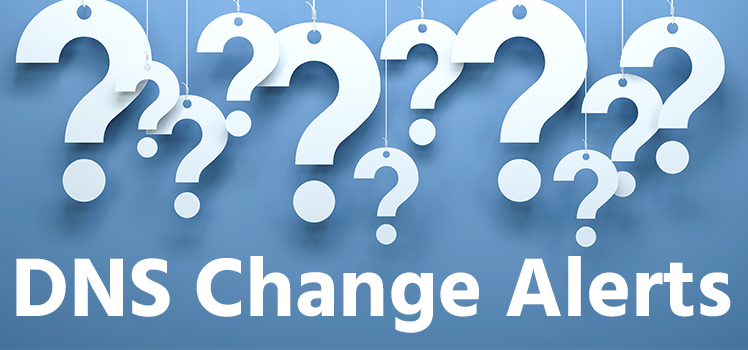Our Cloud is Different Than Yours
A day doesn’t go by where we are yet again annoyed with how flippant organizations are in using the word “cloud” for what appears to be a marketing hype. Take Western Digital and their My Cloud product for which I have seen many TV commercials as of late. It is simply a personal cloud storage device. What’s […]
The Top 5 Things to Look for in a DNS Service Provider
At Total Uptime, we’re often asked how we compare to other DNS service providers. Since every business has a different set of requirements, we thought we’d compile a list of the top 5 reasons some of our customers have chosen Total Uptime Cloud DNS vs. other solution providers who may also offer DNS services. Evaluate these items […]
Heartbleed Bug / Vulnerability
We’ve been receiving a lot of inquiries regarding the Heartbleed Bug, a vulnerability in the popular Open SSL cryptographic software library. Simply put as described at heartbleed.com, “The Heartbleed bug allows anyone on the internet to read the memory of systems protected by the vulnerable versions of the OpenSSL software. This compromises the secret keys used […]
5 Things We Do That AWS Route 53 Does Not
Total Uptime’s DNS Service along with our DNS Failover solution are often compared to Amazon Route 53, and for good reason. Organizations are increasingly looking for a reliable DNS provider in light of frequent outages at various Domain Registrars like Network Solutions. IT experts understand that because DNS is the first link in the chain, it must be the […]
Moving DNS zones from another DNS provider to Total Uptime
DNS domains (called “zones”) can be moved from any platform to Total Uptime’s DNS platform easily and without impact to end users. In this article, we will outline the steps required to ensure a smooth, zero-impact migration. There are 4 simple steps… Here are the steps required to migrate zones from your current DNS provider/infrastructure to ours. […]
When bad DNS really messes things up
According to the Wall Street Journal, and other sources, the Internet was severely disrupted in China for several hours on January 21st as a result of DNS issues. While the true cause of the DNS issues appears unknown (although many blame it on the Great Firewall of China) it always takes issues like these for organizations […]
Downtime costs $7900 per minute, on average
The cost of datacenter downtime has increased more than 40% for many companies over the last 3 years, according to a recent study by Ponemon Institute, sponsored by Emerson Network Power. The report analyzes 67 datacenters during 2013 across a variety of different industries ranging in size from 2500 sq. ft to over 46,000 sq. […]
What are the key differences between DNS FAILOVER and CLOUD FAILOVER so I can better understand which one is right for my application?
The similarities Both solutions require that you tell us what the IP address(es) are for your ‘real servers’. That way we know how to alter DNS or route traffic when one or more servers go up or down. These IP addresses must be publicly accessible, not private. Also, both solutions use the same type of […]
Google and Amazon reveal their secrets of scalability. What is yours?
We read an interesting article recently published in IT World entitled Google, Amazon reveal their secrets of scalability. Joab Jackson, who wrote the article, provides information received at various talks by Google and Amazon on how they engineer their IT infrastructure for scale. One of the key strategies used by Google was doing things on the […]
SPF Records – creating and testing
As a DNS service provider, we frequently receive requests from customers who need assistance with understanding and creating SPF records. This short article outlines a few helpful steps that will hopefully make life easier for some. First, what is an SPF record anyway? Well, Wikipedia sums it up nicely: SPF (Sender Policy Framework) is an email […]
 New feature: DNS Change Alerting
New feature: DNS Change Alerting  Notable Network and Cloud Outages of 2021
Notable Network and Cloud Outages of 2021  Anycast Hosting Made Easy
Anycast Hosting Made Easy